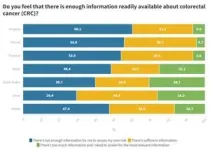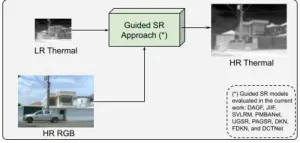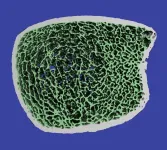(Press-News.org) Little is known about the genetics and biology of chordoma, a rare and aggressive bone tumor. Chordomas occur in approximately one in a million people in the U.S. a year and only five percent of these are in children. These tumors can arise anywhere along the spine in adults. However, in children these tumors occur mostly at the base of the skull, making complete surgical removal challenging or impossible. Any tumor remnants are treated with high doses of radiation—which can cause significant damage to the developing brain.
A team of researchers led by Xiaowu Gai, PhD and Jaclyn Biegel, PhD, FACMG, at the Center for Personalized Medicine at Children’s Hospital Los Angeles, has recently published a genomic study that uncovered two classes of genetic causes for chordoma in children by conducting some genomic detective work. “Finding the causes driving the different subtypes of chordoma could lead to the development of better treatment strategies for children,” says Katrina O’Halloran, MD, MS, pediatric neuro-oncologist and first author of the study. “Prior studies have been conducted primarily in adults and we know that children’s tumors can present and behave differently.” For example, pediatric solid tumors are more likely to be driven by underlying germline changes—alterations that can be passed on to future generations—that increase the risk for cancer.
A few genetic clues
Previous chordoma studies revealed the primary genetic defect in one subtype of the disease, poorly differentiated pediatric chordoma, is the loss of SMARCB1, a gene that encodes a key member of the SWI/SNF chromatin remodeling complex, which is a group of proteins that associate to remodel the way DNA is packaged within the cell. While there have been additional genetic risk factors and somatic (acquired) mutations identified in tumors from other subtypes, there was no common biological mechanism connecting all these variants. Moreover, prior genomic studies of chordoma focused only on the nuclear DNA genome, neglecting the mitochondrial DNA genome entirely.
Looking beyond the nuclear DNA genome and nuclear-encoded genes
The CHLA research team had previously identified and published strong causal and contributory roles of mitochondrial DNA variants in a variety of pediatric cancers. In the present study, they performed dual-genome investigation by sequencing the coding regions (exons) of all genes in the nuclear DNA genome, as well as the entire mitochondrial DNA genome, of 29 chordoma tumor samples from 23 pediatric patients. Because of the rarity of chordoma, these samples were contributed by six different academic medical centers across the nation. To determine whether their findings were unique to pediatric chordoma, co-first author Hesamedin Hakimjavadi, PhD, clinical bioinformatics scientist at CHLA, analyzed the whole-genome sequencing datasets of 93 chordomas and their matched normal tissues derived from a group of 80 adult skull-base chordoma patients.
Aberrant indels and haywire mitochondria
Tumors from five of the 23 pediatric chordoma patients (22%) were shown to carry short inframe insertions and deletions (indels) in the ARID1B gene. The same mutations were found in the normal tissue from one of the five patients. Computational studies demonstrated a strong likelihood that they were of germline origin in the remaining patients, implicating them as risk factors for pediatric chordoma.
A significant fraction of the adult chordoma patients (5%) carried comparable inherited ARID1B indels. While this was a lower number than that of pediatric chordoma patients, it was still significantly higher than reported in the general population. The ARID1B gene encodes a member of the SWI/SNF complex, similar to SMARCB1.
“These findings implicate a common disease pathway in different subtypes of chordoma that may alter gene expression through defects in the SWI/SNF chromatin remodeling complex,” says Dr. Jaclyn Biegel, Director of the Center for Personalized Medicine and a senior author of the study. The research team also discovered a significant number of mitochondrial DNA (mtDNA) mutations in the pediatric chordoma samples. These mutations were especially enriched in NADH (Mitochondrial Complex 1 genes). Analysis of the data from the adult chordoma cohort revealed similar mtDNA alterations in Complex 1 genes.
“This study implicates a potential interplay of chromatin remodeling and mitochondrial metabolism in chordoma genesis,” says Dr. Gai, Director of Bioinformatics, Center for Personalized Medicine, and senior study author. “It will therefore be extremely interesting to understand how this may drive the growth of these tumors. Unraveling this could be the crucial first step for developing more targeted and effective therapies for chordoma in both pediatric and adult patients.”
Learn about the Cancer and Blood Disease Institute at Children’s Hospital Los Angeles.
END
Children’s Hospital Los Angeles team finds new potential causes of rare and lethal bone cancer
Genomic study uncovers germline ARID1B and mitochondrial variants potentially driving pediatric chordoma genesis
2024-05-31
ELSE PRESS RELEASES FROM THIS DATE:
One in four Thai concerned about colorectal cancer screening cost
2024-05-31
According to research led by Prof. Varut Lohsiriwat, Professor of Surgery, Division of General Surgery (Section of Colorectal Surgery) of Siriraj Hospital, at Mahidol University, CRC is the third most common cancer in Thailand, accounting for 11% of the cancer burden. It is the only malignancy with an increased incidence in both genders in the country.
By 2040, the burden of CRC is projected to increase to 3.2 million new cases and 1.6 million deaths per year representing a 66% and 71% rise in new cases and deaths respectively relative ...
Infants hear significantly more speech than music at home, UW study finds
2024-05-31
Speech and music are the dominant elements of an infant’s auditory environment. While past research has shown that speech plays a critical role in children’s language development, less is known about the music that infants hear.
A new University of Washington study, published May 21 in Developmental Science, is the first to compare the amount of music and speech that children hear in infancy. Results showed that infants hear more spoken language than music, with the gap widening as the babies get older.
“We wanted to get a snapshot of what’s happening in infants’ home environments,” said corresponding author ...
New coral disease forecasting system led by University of Hawai'i team
2024-05-31
Research led by the University of Hawaiʻi at Mānoa Hawaiʻi Institute of Marine Biology (HIMB) has led to a new tool for forecasting coral disease that could help conservationists step in at the right times with key interventions. Ecological forecasts are critical tools for conserving and managing marine ecosystems, but few forecasting systems can account for the wide range of ecological complexities in near-real-time.
Using ecological and marine environmental conditions, the Multi-Factor Coral Disease Risk product predicts the risk of two diseases across reefs in the central and western Pacific and along the east coast of Australia. An article ...
Tobacco funded research still appearing in top medical journals
2024-05-31
Tobacco-funded research is still appearing in highly-cited medical journals - despite attempts by some to cut ties altogether, finds an investigation by The Investigative Desk and The BMJ today.
Although the tobacco industry has a long history of subverting science, most leading medical journals don’t have policies which ban research wholly or partly funded by the industry.
And even when publishers, authors and universities are willing to restrict tobacco industry ties, they struggle ...
Trout in mine-polluted rivers are genetically ‘isolated’
2024-05-31
Trout living in rivers polluted by metal from old mines across the British Isles are genetically “isolated” from other trout, new research shows.
Researchers analysed brown trout at 71 sites in Britain and Ireland, where many rivers contain metal washed out from disused mines.
While trout in metal-polluted rivers appear healthy, they are genetically distinct – and a lack of diversity in these populations makes them vulnerable to future threats.
By comparing the DNA of trout in rivers with and without metal pollution, the researchers found that metal-tolerant trout ...
How researchers are protecting AI of the future
2024-05-31
Trust is vital to the widespread acceptance of AI across industries, especially when safety is a concern. For example, people may be hesitant to ride in a self-driving car knowing that the AI running it can be hacked. One barrier to increasing trust is that the algorithms powering AI are vulnerable to such attacks.
Dr. Samson Zhou, assistant professor in the Department of Computer Science and Engineering at Texas A&M University, and Dr. David P. Woodruff, professor in the Computer Science Department at Carnegie Mellon University, hope to strengthen algorithms used by big data AI models against attacks. Big data AI models are ...
Enhancement of guided thermal image super-resolution approaches
2024-05-31
Researchers of CIDIS at ESPOL Polytechnic University have developed a new method to enhance thermal image super-resolution by employing synthetic imagery. This novel approach utilizes high-resolution images from the visible spectrum to guide the super-resolution of low-resolution thermal images, significantly improving the detail and utility of thermal imaging across various applications.
When visualizing thermal images, one typically imagines the blurry, less-detailed outputs common with standard thermal ...
Virginia Tech scientists develop visual tool to help people group foods based on their levels of processing
2024-05-31
Fralin Biomedical Research Institute at VTC scientists studying ultra-processed foods have created a new tool for assessing the rewarding and reinforcing properties of foods that make up 58 percent of calories consumed in the United States. The foods have been linked to a wide range of negative health outcomes.
The research, which was published in April in the journal Appetite, provides a collection of carefully curated images of minimally processed and ultra-processed foods matched on 26 characteristics, including macronutrients, sodium, dietary fiber, calories, price, and visual characteristics such as a color and portion size.
The work was based on the NOVA classification system ...
Glimpses of a volcanic world: New telescope images of Jupiter's moon Io rival those from spacecraft
2024-05-31
New images of Jupiter's volcano-studded moon Io, taken by the Large Binocular Telescope on Mount Graham in Arizona, offer the highest resolution of Io ever achieved with an Earth-based instrument. The observations were made possible by a new high-contrast optical imaging instrument, dubbed SHARK-VIS, and the telescope's adaptive optics system, which compensates for the blurring induced by atmospheric turbulence.
The images, to be published in the journal Geophysical Research Letters, reveal surface features as small as 50 miles across, ...
Wake Forest University School of Medicine awarded $1.5 million from NIH to use advanced imaging to assess bone loss after bariatric surgery
2024-05-30
WINSTON-SALEM, N.C. – May 30, 2024 – Researchers at Wake Forest University of School of Medicine have received a five-year, $1.5 million grant from the National Institute of Arthritis and Musculoskeletal and Skin Diseases, part of the National Institutes of Health (NIH), to study bone microarchitecture in patients following bariatric surgery.
With the funding support, researchers at Wake Forest University School of Medicine will partner with Virginia Tech to add a virtual biopsy that uses an innovative technique called high-resolution peripheral quantitative ...
LAST 30 PRESS RELEASES:
Why nail-biting, procrastination and other self-sabotaging behaviors are rooted in survival instincts
Regional variations in mechanical properties of porcine leptomeninges
Artificial empathy in therapy and healthcare: advancements in interpersonal interaction technologies
Why some brains switch gears more efficiently than others
UVA’s Jundong Li wins ICDM’S 2025 Tao Li Award for data mining, machine learning
UVA’s low-power, high-performance computer power player Mircea Stan earns National Academy of Inventors fellowship
Not playing by the rules: USU researcher explores filamentous algae dynamics in rivers
Do our body clocks influence our risk of dementia?
Anthropologists offer new evidence of bipedalism in long-debated fossil discovery
Safer receipt paper from wood
Dosage-sensitive genes suggest no whole-genome duplications in ancestral angiosperm
First ancient human herpesvirus genomes document their deep history with humans
Why Some Bacteria Survive Antibiotics and How to Stop Them - New study reveals that bacteria can survive antibiotic treatment through two fundamentally different “shutdown modes”
UCLA study links scar healing to dangerous placenta condition
CHANGE-seq-BE finds off-target changes in the genome from base editors
The Journal of Nuclear Medicine Ahead-of-Print Tip Sheet: January 2, 2026
Delayed or absent first dose of measles, mumps, and rubella vaccination
Trends in US preterm birth rates by household income and race and ethnicity
Study identifies potential biomarker linked to progression and brain inflammation in multiple sclerosis
Many mothers in Norway do not show up for postnatal check-ups
Researchers want to find out why quick clay is so unstable
Superradiant spins show teamwork at the quantum scale
Cleveland Clinic Research links tumor bacteria to immunotherapy resistance in head and neck cancer
First Editorial of 2026: Resisting AI slop
Joint ground- and space-based observations reveal Saturn-mass rogue planet
Inheritable genetic variant offers protection against blood cancer risk and progression
Pigs settled Pacific islands alongside early human voyagers
A Coral reef’s daily pulse reshapes microbes in surrounding waters
EAST Tokamak experiments exceed plasma density limit, offering new approach to fusion ignition
Groundbreaking discovery reveals Africa’s oldest cremation pyre and complex ritual practices
[Press-News.org] Children’s Hospital Los Angeles team finds new potential causes of rare and lethal bone cancerGenomic study uncovers germline ARID1B and mitochondrial variants potentially driving pediatric chordoma genesis










